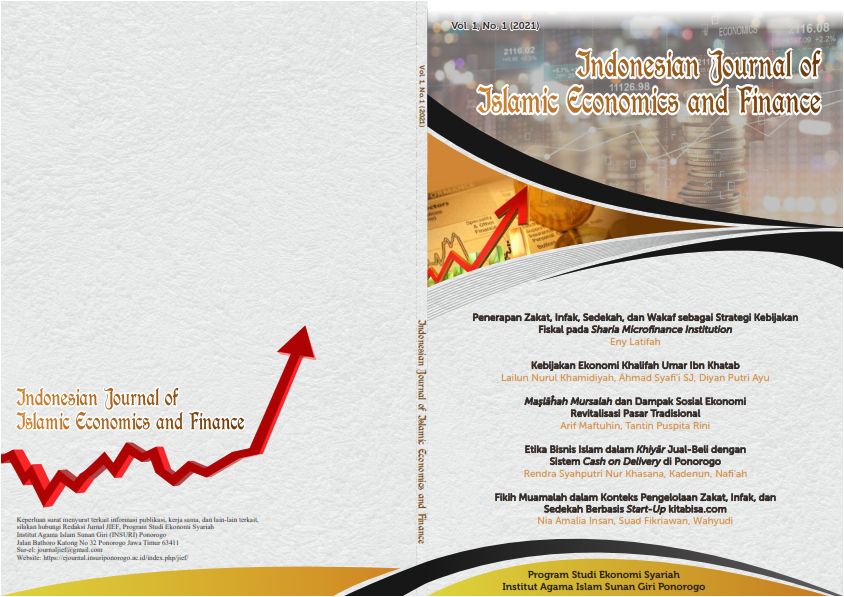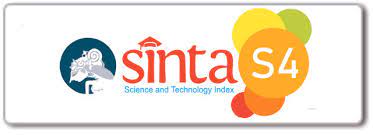The Impact of Political Instability on Exchange Rate in South Africa: An Econometric Modelling
DOI:
https://doi.org/10.37680/ijief.v5i1.7063Keywords:
Economic growth; Exchange rate; Political instability; Real interest rate; South AfricaAbstract
The study examines the impact of political instability on exchange rates while adjusting for economic growth and real interest rates from 1989 to 2020. After applying the VECM model, the findings indicate a short-term correlation between exchange rates and political instability. The results of the Granger causality suggest that exchange rate fluctuations and inflation rates are not directly caused by political instability. Additionally, the ARIMA model results indicate that political instability in the long run should be anticipated to cause minor fluctuations in exchange rates. Political unrest is forecast to level off between 2021 and 2040, with a subsequent increase in the exchange rate expected. It is recommended that policymakers deal with macroeconomic conditions that affect exchange rates, such as interest rates, to stabilize the economy and avoid excessive currency appreciation or depreciation.
References
Abraham, M. (2020). Studying the patterns and long‐run dynamics in cryptocurrency prices. Journal of Corporate Accounting & Finance, 31(3), 98–113. https://doi.org/10.1002/jcaf.22427
Abu Murad, M. S., & Alshyab, N. (2019). Political instability and its impact on economic growth: The case of Jordan. International Journal of Development Issues, 18(3), 366–380.
Arbetman, M. (1995). The impact of politics on exchange rate fluctuations: The untold story. International Interactions, 21(2), 127–153. https://doi.org/10.1080/03050629508434863
Bank, W., & Bank, W. (2018). South Africa Economic Update, No. 11: Jobs and Inequality. World Bank.
B.H, H. (2005). Market Value: The Rand. Ournal of Economics, Wiley Publishers, 36(1), 16–38.
Box, G. (2013). Box and Jenkins: Time Series Analysis, Forecasting and Control. In T. C. Mills, A Very British Affair (pp. 161–215). Palgrave Macmillan UK. https://doi.org/10.1057/9781137291264_6
Caputo, R. (2009). Shocks Externos y Politica Monetaria:?` Conviene Responder a Desviaciones Cambiarias? Revista de Análisis Económico, 24(1), 55–99.
Demirhan, H. (2020). dLagM: An R package for distributed lag models and ARDL bounds testing. Plos One, 15(2), e0228812.
Fredriksson, P. G., & Svensson, J. (2003). Political instability, corruption and policy formation: The case of environmental policy. Journal of Public Economics, 87(7–8), 1383–1405.
Gøtzsche-Astrup, O., Van Den Bos, K., & Hogg, M. A. (2020). Radicalization and violent extremism: Perspectives from research on group processes and intergroup relations. Group Processes & Intergroup Relations, 23(8), 1127–1136. https://doi.org/10.1177/1368430220970319
Gujarati, D. N. (2002a). Basic Econometrics 4th ed. http://dspace.kottakkalfarookcollege.edu.in:8001/jspui/bitstream/123456789/3846/1/Basic%20Econometrics%20(%20PDFDrive%20).pdf
Gujarati, D. N. (2002b). Basic Econometrics 4th ed. http://dspace.kottakkalfarookcollege.edu.in:8001/jspui/bitstream/123456789/3846/1/Basic%20Econometrics%20(%20PDFDrive%20).pdf
Gujarati, D. N. (2002c). Basic Econometrics 4th ed. http://dspace.kottakkalfarookcollege.edu.in:8001/jspui/bitstream/123456789/3846/1/Basic%20Econometrics%20(%20PDFDrive%20).pdf
Hadi, A. R. A., Zainuddin, Z., Hussain, H. I., & Rehan, R. (2019). Interactions of short-term and long-term interest rates in Malaysian debt markets: Application of error correction model and wavelet analysis. Asian Academy of Management Journal, 24, 19–31.
Hall, M. G. (2018). Exchange rate crises in developing countries: The political role of the banking sector. Routledge. https://www.taylorfrancis.com/books/mono/10.4324/9781351158442/exchange-rate-crises-developing-countries-michael-hall
Huntington, S. P. (1968). Political order in changing societies. Yale University.
Ibrahim, H., Ziolo, M., & Balacescu, A. (2017). Economic Development: Global & Regional Studies. Nternational Journal of Politics & Economics, 4, 1–318.
Jong-A-Pin, R. (2009). On the measurement of political instability and its impact on economic growth. European Journal of Political Economy, 25(1), 15–29.
Junejo, I., Sohu, J. M., & Hussain, F. (2019). The Impact of Corruption on Exchange Rate: Empirical Evidence from Panel Data. Sukkur IBA Journal of Management and Business, 6(1), 34–44.
Kaufmann, D., Kraay, A., & Mastruzzi, M. (2005). Governance matters IV: Governance indicators for 1996-2004 (Vol. 3630). Citeseer. https://citeseerx.ist.psu.edu/document?repid=rep1&type=pdf&doi=bde6b4f7a77e3f495e9eae96481ca7cbc1799534
Mahadea, D., & Kabange, M. (2022). EXAMINING THE RELATIONSHIP BETWEEN ECONOMIC FREEDOM, INCOME AND ENTREPRENEURSHIP IN SOUTH AFRICA: A VECM APPROACH. Journal of Developmental Entrepreneurship, 27(01), 2250004. https://doi.org/10.1142/S1084946722500042
McIndoe-Calder, T., Bedi, T., & Mercado, R. (2019). Hyperinflation in Zimbabwe. In T. McIndoe-Calder, T. Bedi, & R. Mercado, Hyperinflation in Zimbabwe (pp. 9–25). Springer International Publishing. https://doi.org/10.1007/978-3-030-31015-8_2
Mishra, P., Pandey, C. M., Singh, U., Gupta, A., Sahu, C., & Keshri, A. (2019). Descriptive statistics and normality tests for statistical data. Annals of Cardiac Anaesthesia, 22(1), 67–72.
Monamodi, N. E., & Choga, I. (2022). The impact of fiscal and monetary policy on economic growth in Southern African Custom Union: A panel ARDL approach. International Journal of Economic Policy in Emerging Economies, 15(1), 86. https://doi.org/10.1504/IJEPEE.2022.120059
N, C. (2010). Present Tense: International Monetary Fund. Journal of Economic Literature.
Nor, M. I., Masron, T. A., & Alabdullah, T. T. Y. (2020). Macroeconomic Fundamentals and the Exchange Rate Volatility: Empirical Evidence From Somalia. Sage Open, 10(1), 2158244019898841. https://doi.org/10.1177/2158244019898841
Nqabeni, M. (2016). Politics is killing the Rand. Fin24, 23.
Office, I. M. F. I. E. (2015). IMF Response to the Financial and Economic Crisis. International Monetary Fund. https://books.google.com/books?hl=id&lr=&id=dp0YEAAAQBAJ&oi=fnd&pg=PR1&dq=International+Monetary+Fund+(IMF).+(2012).+Working+Together+to+Support+Global+Recovery.+Annual+Report+of+the+Executive+Board+for+the+Financial+Year+Ended+April+30,+2012.&ots=6oQA9Zjx3L&sig=OytG4LimBw5Pb3tC71U0G3ex_ws
Oliver, K. (2019). Why Does Politics Impact Currency Exchange Rates?” Universal Partners, October 2019. niversal Partners.
Onour, I. A., & Sergi, B. S. (2021). The impact of a political shock on foreign exchange markets in a small and open economy: A dynamic modelling approach. Journal of Central Banking Theory and Practice, 10(3), 137–152. https://doi.org/10.2478/jcbtp-2021-0028
Pesaran, M., & Pesaran, A. (1997). Working with Microsoft 4.0: Interactive Econometric. Oxford University Press: Oxford, UK.
Phatashwane, R. J. (2018). A Critical Evaluation of the Independence of the Office of the Chief Justice and Its Role in Promoting Judicial Transformation in South Africa. University of South Africa. http://hdl.handle.net/10500/24847
Rapetti, M. (2016). 12. The Real Exchange Rate and Economic Growth: Some Observations on the Possible Channels. In M. Damill, M. Rapetti, & G. Rozenwurcel (Eds.), Macroeconomics and Development (pp. 250–268). Columbia University Press. https://doi.org/10.7312/dami17508-014
S. N., A.-A. (2021). Cointegration and Causality between Disaggregated Exports and Economic Growth in ASEAN-4 Nations. Turkish Journal of Computer and Mathematics Education, 12(3), 213–239.
Schwager, E., Mallick, H., Ventz, S., & Huttenhower, C. (2017). A Bayesian method for detecting pairwise associations in compositional data. PLoS Computational Biology, 13(11), e1005852.
Shonchoy, A. S., & Tsubota, K. (2016). Partition, independence, and population geography in Bengal. IDE Discussion Paper, 590. https://ir.ide.go.jp/record/37595/files/IDP000590_001.pdf
Sibanda, O. (2021). Corruption Perception Index: Covid-19 PPE Procurement Scandals Cement South Africa’s Global Ranking below 50. Daily Maverick.
Simiyu, A. (2015). Role of leadership in organizational development. Journal of Management Studies, 1–24.
Tang, H., & Zhang, Y. (2012). Exchange rates and the margins of trade: Evidence from Chinese exporters. CESifo Economic Studies, 58(4), 671–702.
Taylor, R. (2022). Access to Academic Resources: Barriers and Solutions. Journal of Library Science, 18(1), 45–59.
Waverman, L., Meschi, M., & Fuss, M. (2005). The impact of telecoms on economic growth in developing countries. The Vodafone Policy Paper Series, 2(03), 10–24.
World Bank. (2012). Responding with Knowledge and Experience. The Journal of World Bank.
Downloads
Published
How to Cite
Issue
Section
License
Copyright (c) 2025 Munzhelele Tshilidzi, Jeke L

This work is licensed under a Creative Commons Attribution-NonCommercial 4.0 International License.
Copyright:
An author who publishes in Indonesian Journal of Islamic Ekonomics and Finance agrees to the following terms:
- Author retains the copyright and grants the journal the right of first publication of the work simultaneously licensed under a Creative Commons Attribution-NonCommercial 4.0 International License that allows others to share the work with an acknowledgment of the work's authorship and initial publication in this journal.
- Author is able to enter into separate, additional contractual arrangements for the non-exclusive distribution of the journal's published version of the work (e.g., post it to an institutional repository or publish it in a book) with the acknowledgment of its initial publication in this journal.
- Author is permitted and encouraged to post his/her work online (e.g., in institutional repositories or on their website) prior to and during the submission process, as it can lead to productive exchanges, as well as earlier and greater citation of the published work (See The Effect of Open Access).
License:
-
Attribution — You must give appropriate credit, provide a link to the license, and indicate if changes were made. You may do so in any reasonable manner, but not in any way that suggests the licensor endorses you or your use.
-
NonCommercial — You may not use the material for commercial purposes.
-
No additional restrictions — You may not apply legal terms or technological measures that legally restrict others from doing anything the license permits.
You are free to:
- Share — copy and redistribute the material in any medium or format
- Adapt — remix, transform, and build upon the material

This work is licensed under a Creative Commons Attribution-NonCommercial 4.0 International License.



.png)







